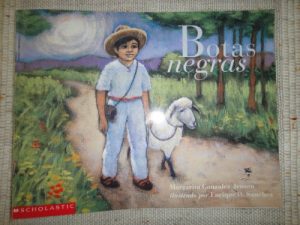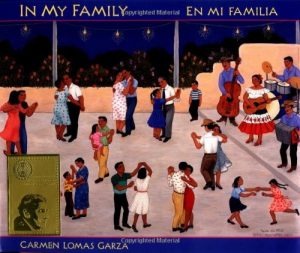 From the author of Family Pictures/Cuadros de familia comes a second book that returns readers once again to the town of Kingsville, Texas, near the border with Mexico. Through ful-color paintings and warm personal stories, Garza brings to life more loving memories of growing up in a traditional Mexican American community.
From the author of Family Pictures/Cuadros de familia comes a second book that returns readers once again to the town of Kingsville, Texas, near the border with Mexico. Through ful-color paintings and warm personal stories, Garza brings to life more loving memories of growing up in a traditional Mexican American community.
Family
Laughing Out Loud, I Fly : A Carcajadas Yo Vuelo
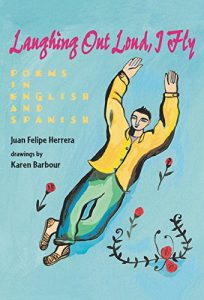 From one of the most prominent Chicano poets writing today, here are poems like sweet music-to make the body shake and move to the rhythm of rhyme, to the pulse of words. Juan Felipe Herrera writes in both Spanish and English about the joy and laughter and sometimes the confusion of growing up in an upside-down, jumbled-up world-between two cultures, two homes. With a crazy maraca beat, Herrera creates poetry as rich and vibrant as mole de ole and pineapple tamales…an aroma of papaya…a clear soup with strong garlic, so you will grow not disappear Herrera’s words are hot& peppery, good for you. They show us what it means to laugh out loud until it feel like flying.Juan Felipe Herrera’s vibrant poems dance across these pages in a dazzling explosion of two languages English and Spanish. Skillfully crafted, beautiful, joyful, fun, the poems are paired with whimsical black and white drawings by Karen Barbour. The resulting collage fills the soul and the senseshot and peppery, good for you and celebrates a life lived between two cultures.Laughing out loud, I fly, toward the good things,to catch Mama Lucha on the sidewalk, afterschool, waiting for the green-striped bus,on the side of the neighborhood store, next to almonds,Jose’s tiny wooden mule, the wiseboy from San Diego,teeth split apart, like mine in the coppery afternoon . . .22000 Pura Belpre Award
From one of the most prominent Chicano poets writing today, here are poems like sweet music-to make the body shake and move to the rhythm of rhyme, to the pulse of words. Juan Felipe Herrera writes in both Spanish and English about the joy and laughter and sometimes the confusion of growing up in an upside-down, jumbled-up world-between two cultures, two homes. With a crazy maraca beat, Herrera creates poetry as rich and vibrant as mole de ole and pineapple tamales…an aroma of papaya…a clear soup with strong garlic, so you will grow not disappear Herrera’s words are hot& peppery, good for you. They show us what it means to laugh out loud until it feel like flying.Juan Felipe Herrera’s vibrant poems dance across these pages in a dazzling explosion of two languages English and Spanish. Skillfully crafted, beautiful, joyful, fun, the poems are paired with whimsical black and white drawings by Karen Barbour. The resulting collage fills the soul and the senseshot and peppery, good for you and celebrates a life lived between two cultures.Laughing out loud, I fly, toward the good things,to catch Mama Lucha on the sidewalk, afterschool, waiting for the green-striped bus,on the side of the neighborhood store, next to almonds,Jose’s tiny wooden mule, the wiseboy from San Diego,teeth split apart, like mine in the coppery afternoon . . .22000 Pura Belpre Award
The Christmas Gift
With honesty and rare grace, award-winning author Francisco Jiménez shares his most poignant Christmas memory in this remarkable book. Illustrated with paintings full of strength and warmth, written in spare bilingual text, this simple story celebrates the true spirit of Christmas, and illuminates how children do indeed draw strength from the bonds of their families.
Botas Negras
Three Little Tamales
While three little tamales cool off on a windowsill, a tortilla rolls by. “You’ll be eaten. You’d better run,” he tells them. And so the tamales jump out the window. The first runs to the prairie and builds a house of sagebrush. The second runs to a cornfield and builds a house of cornstalks. The third runs to the desert and builds a house of cactus. Then who should come along but Senior Lobo, the Big Bad Wolf, with plans to blow their houses down. Valeria Docampo’s oil-and-pencil illustrations add zest and humor to this rollicking southwestern version of a popular tale.
Uno, Dos, Tres, Posada! Let’s Celebrate Christmas
A posada is an important Latino holiday tradition that happens all over the world on each of the nine nights before Christmas. There’s a lot to do every night before the party can begin, and here a little girl guides us through each step—from putting out poinsettias to hanging the piñata—as she counts to ten in English and Spanish. Young readers can follow along by counting the different items mentioned. An author’s note at the end of the story further explains the origins of the posada. Sprinkled with Spanish vocabulary and filled with lively illustrations, this is a posada no one should miss!
Celebrate! It’s Cinco De Mayo!
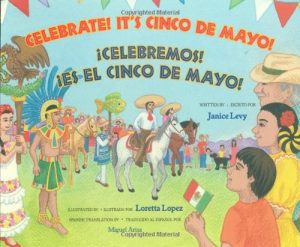 It’s Cinco de Mayo! Everyone is celebrating the holiday in their own way. “Mama marches in the parade. Papa plays in a mariachi band. Abuelita cooks a special meal.” Why do we celebrate Cinco de Mayo? A very simple history of the holiday is interspersed with the story of a young boy celebrating Cinco de Mayo with his family. This bilingual book features a section with “find what’s missing” pictures and simple crafts perfect for any child’s Cinco de Mayo celebration. Loretta Lopez’s engaging and cheerful pictures complement Janice Levy’s child-friendly introduction to this important Mexican holiday.
It’s Cinco de Mayo! Everyone is celebrating the holiday in their own way. “Mama marches in the parade. Papa plays in a mariachi band. Abuelita cooks a special meal.” Why do we celebrate Cinco de Mayo? A very simple history of the holiday is interspersed with the story of a young boy celebrating Cinco de Mayo with his family. This bilingual book features a section with “find what’s missing” pictures and simple crafts perfect for any child’s Cinco de Mayo celebration. Loretta Lopez’s engaging and cheerful pictures complement Janice Levy’s child-friendly introduction to this important Mexican holiday.
A Box Full of Kittens
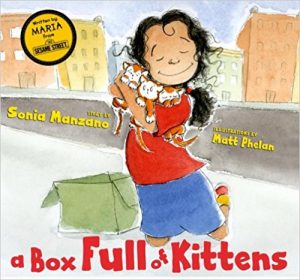 Ruthie loves Superman. Ruthie wants to be Superman. And when Ruthie is asked to go spend the afternoon with her aunt, who is about to have a baby any day day now and may need some help., Ruthie seizes the opportunity. It could be her chance to be a hero, should the baby come while she’s visiting! But when Ruthie is out fetching a snack for her aunt, she gets so distracted by a box full of kittens in the bodega that she doesn’t hear her aunt calling for her, nor does she notice the policemen running to the apartment or the ambulance pulling to the curb. When she realizes what’s happened, she’s devastated — she’s missed her one chance to be a hero! Or has she? Sonia Manzano, best known as “Maria” on Sesame Street, once again captures the warmth, love, and adventures of her childhood Bronx neighborhood.
Ruthie loves Superman. Ruthie wants to be Superman. And when Ruthie is asked to go spend the afternoon with her aunt, who is about to have a baby any day day now and may need some help., Ruthie seizes the opportunity. It could be her chance to be a hero, should the baby come while she’s visiting! But when Ruthie is out fetching a snack for her aunt, she gets so distracted by a box full of kittens in the bodega that she doesn’t hear her aunt calling for her, nor does she notice the policemen running to the apartment or the ambulance pulling to the curb. When she realizes what’s happened, she’s devastated — she’s missed her one chance to be a hero! Or has she? Sonia Manzano, best known as “Maria” on Sesame Street, once again captures the warmth, love, and adventures of her childhood Bronx neighborhood.
Family Pictures, 15th Anniversary Edition / Cuadros De Familia, Edición Quinceañera
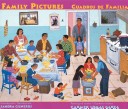
Family Pictures is the story of Carmen Lomas Garza\’s girlhood: celebrating birthdays, making tamales, finding a hammerhead shark on the beach, picking cactus, going to a fair in Mexico, and confiding to her sister her dreams of becoming an artist. These day-to-day experiences are told through fourteen vignettes of art and a descriptive narrative, each focusing on a different aspect of traditional Mexican American culture. The English-Spanish text and vivid illustrations reflect the author\’s strong sense of family and community. For Mexican Americans, Carmen Lomas Garza offers a book that reflects their lives and traditions. For others, this work offers insights into a beautifully rich community.
See the review at WOW Review, Volume 3, Issue 2
Just Like Home/Como en mi Tierra
A young girl’s first sights and experiences in the United States are sometimes familiar “just like home.”

